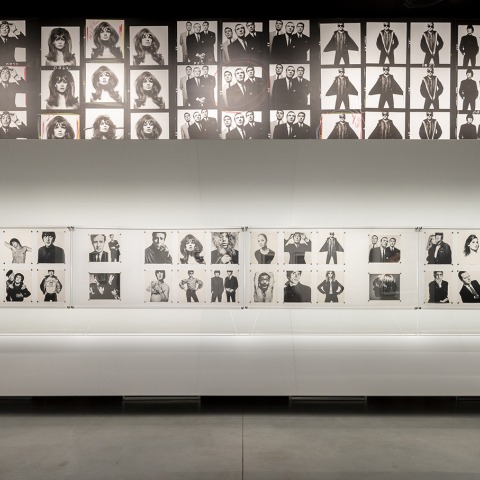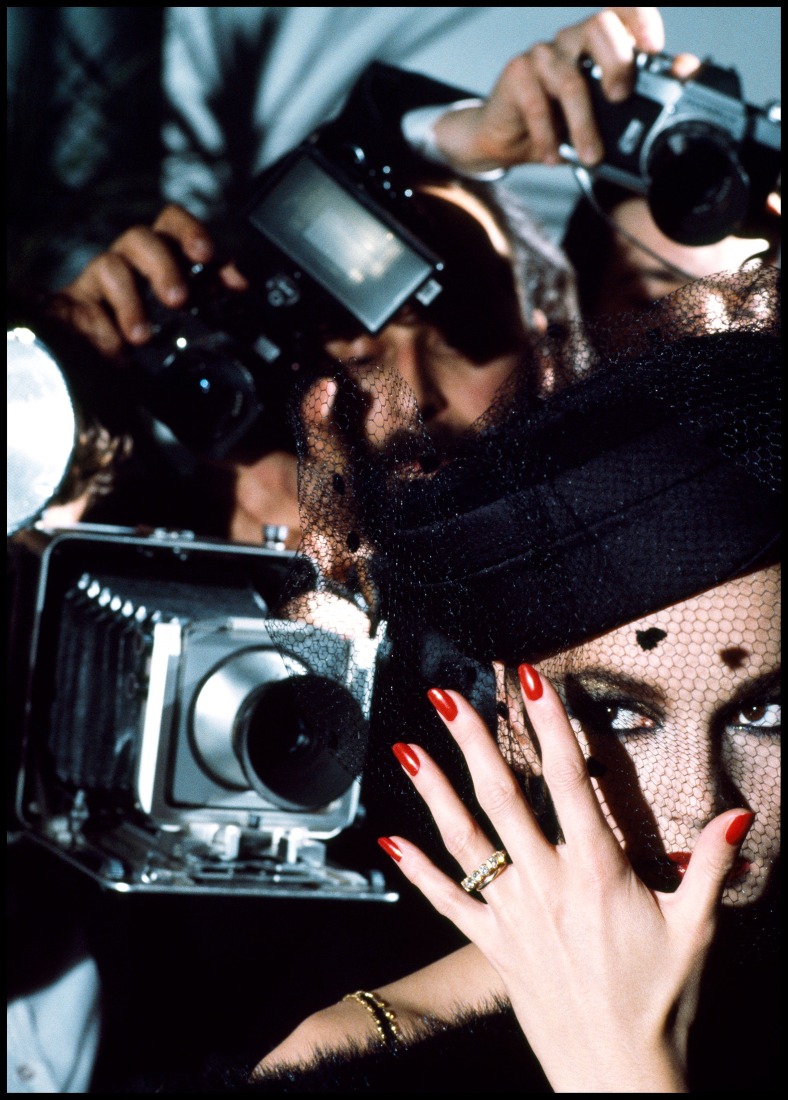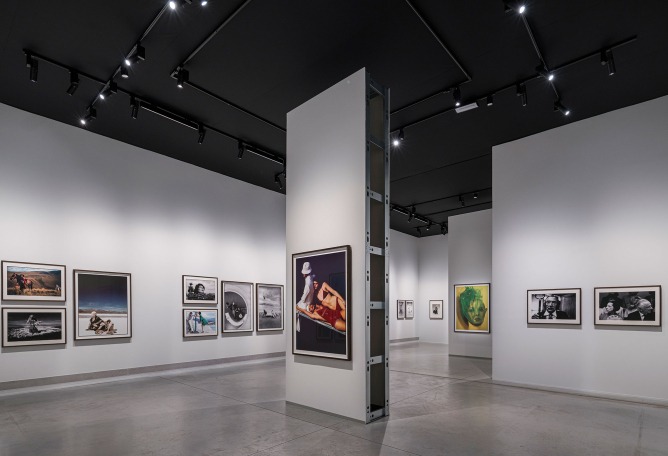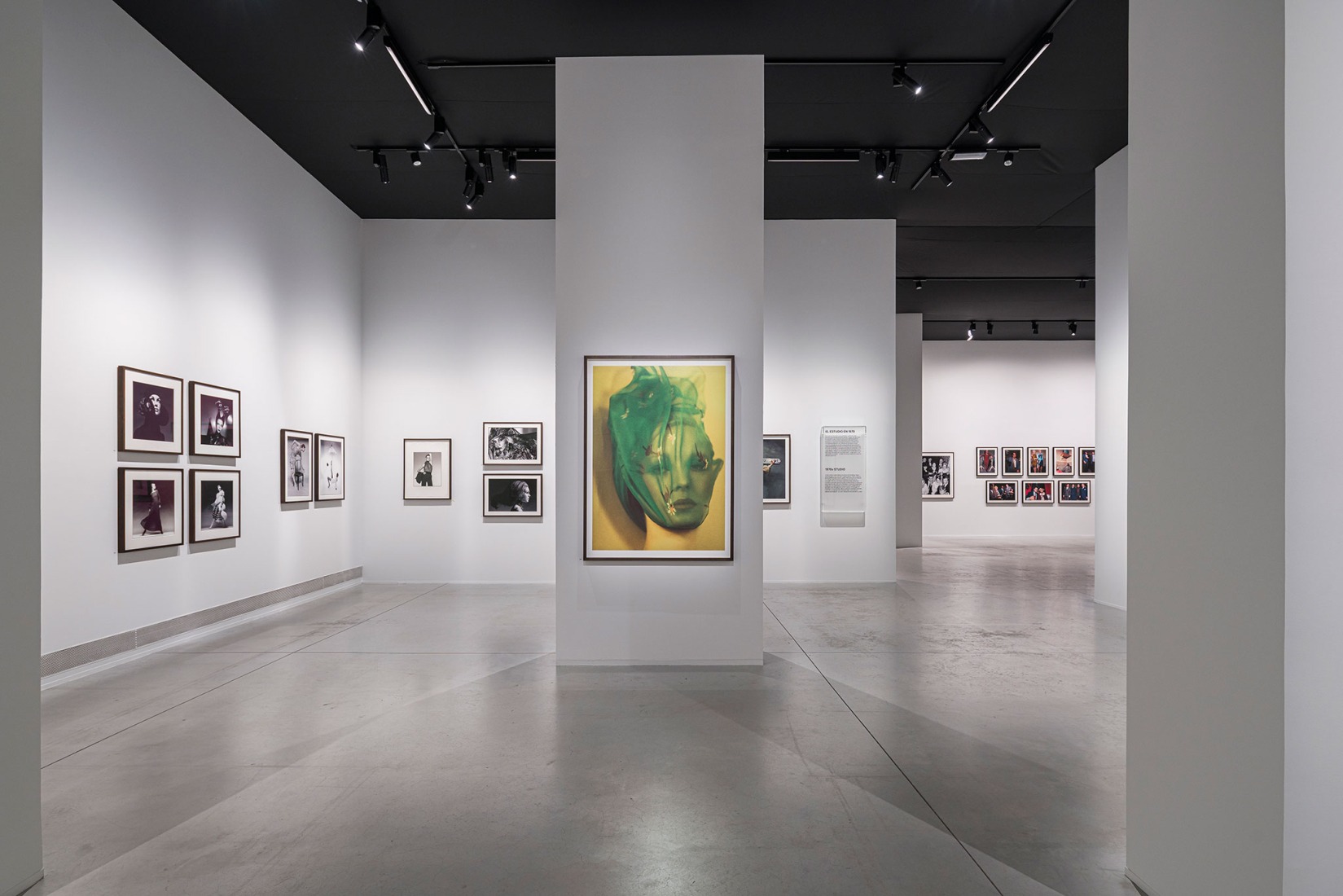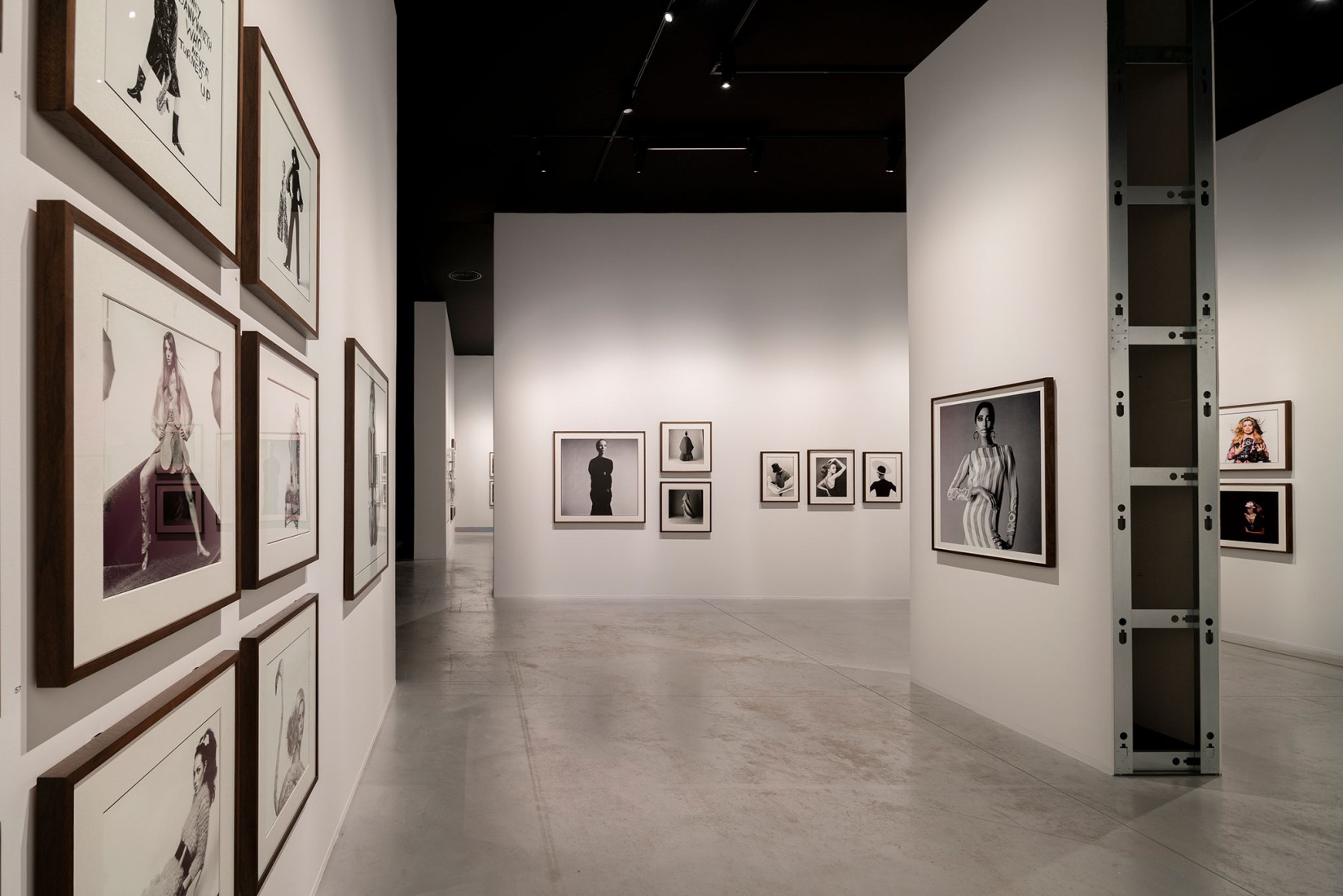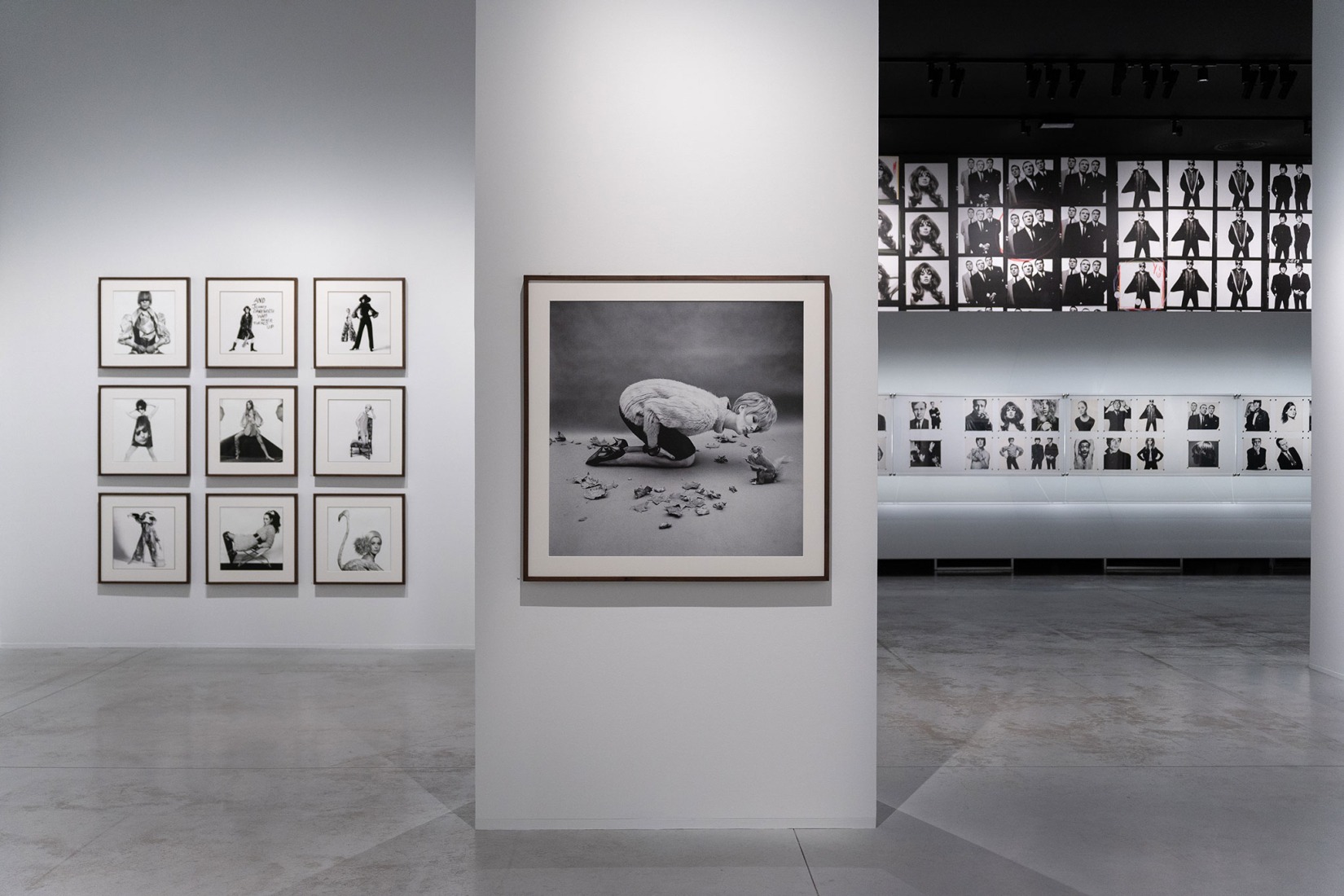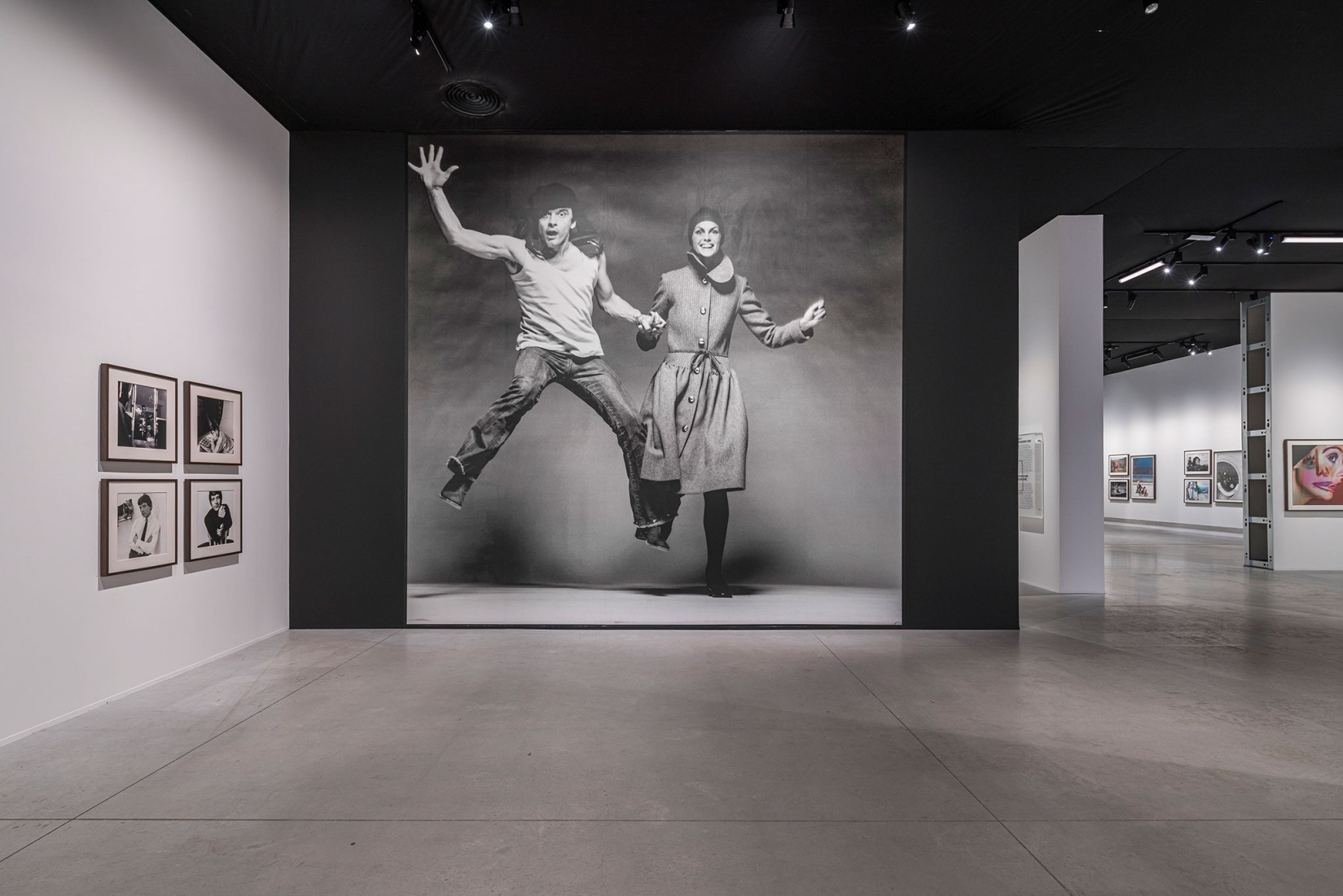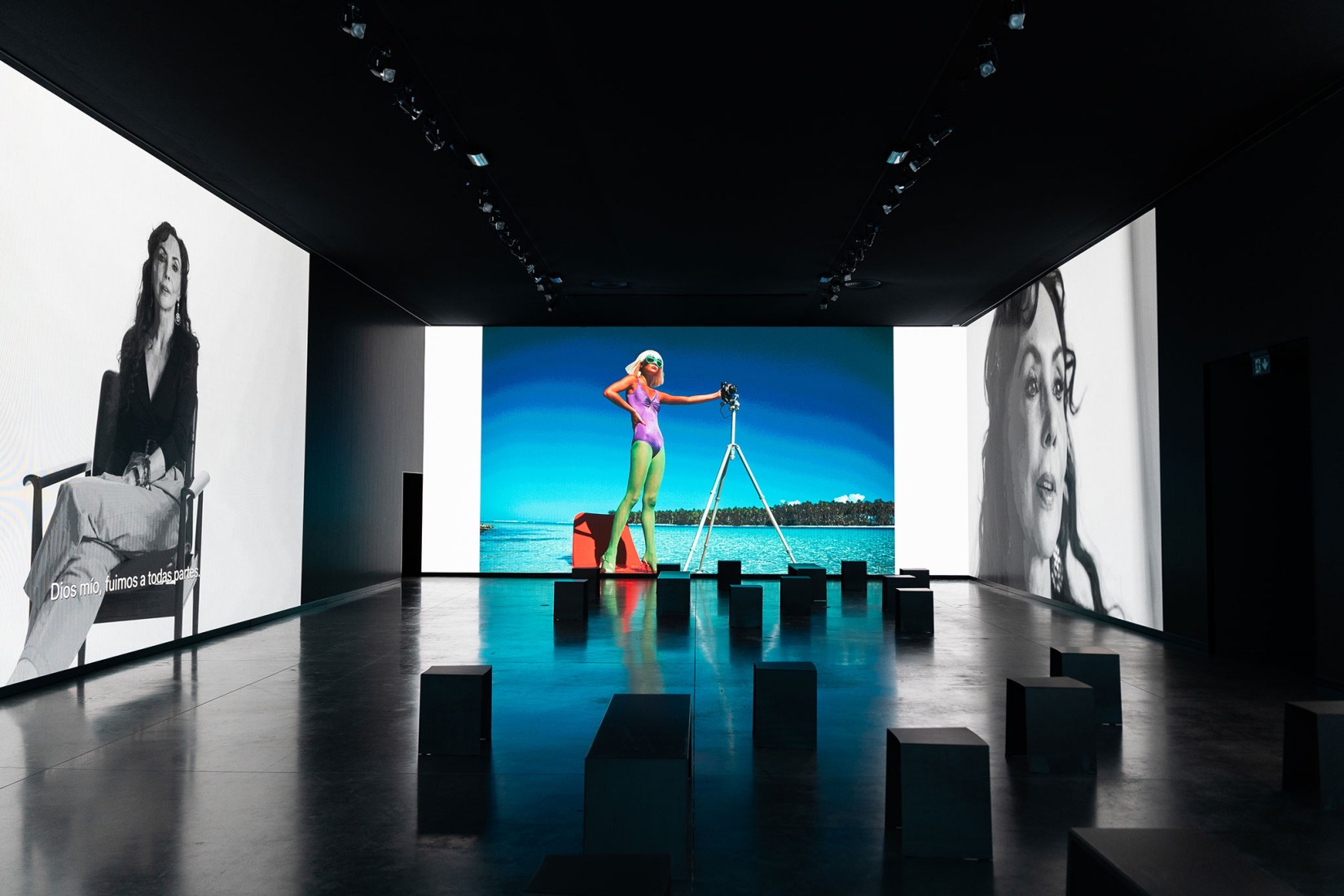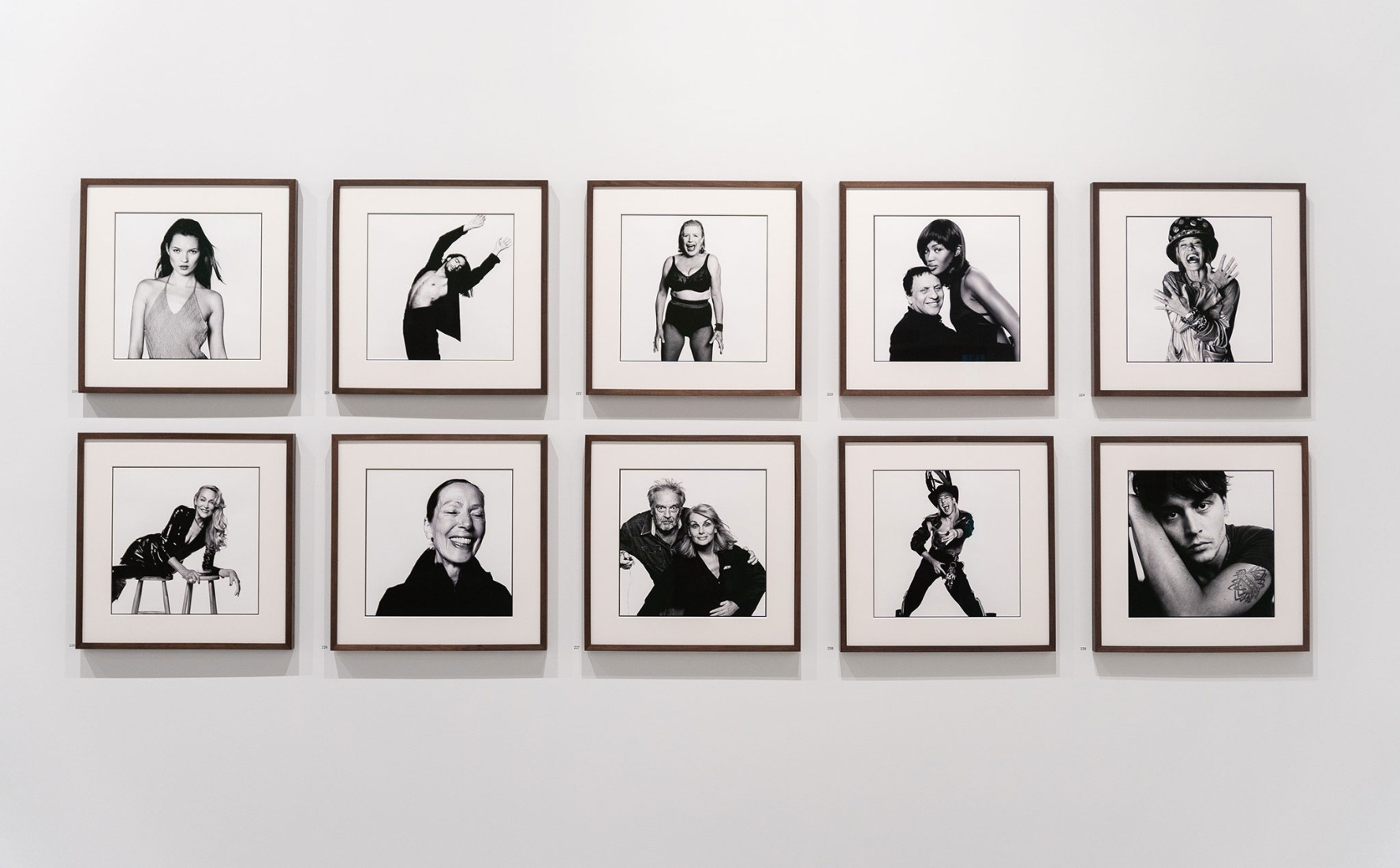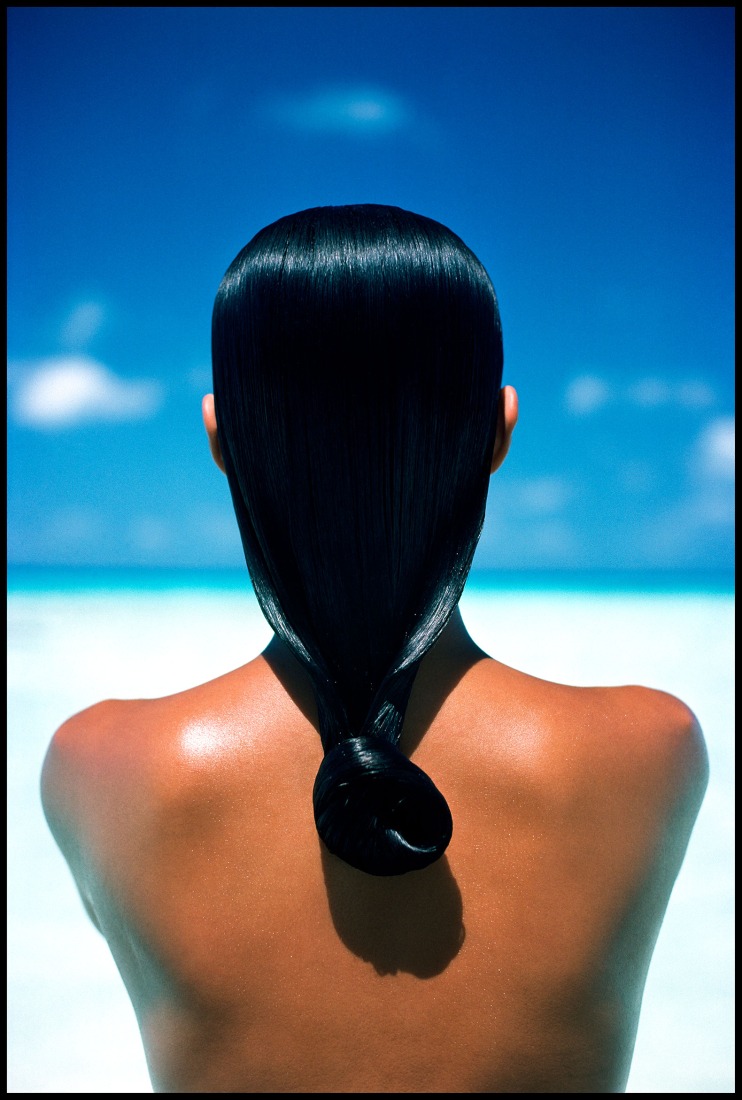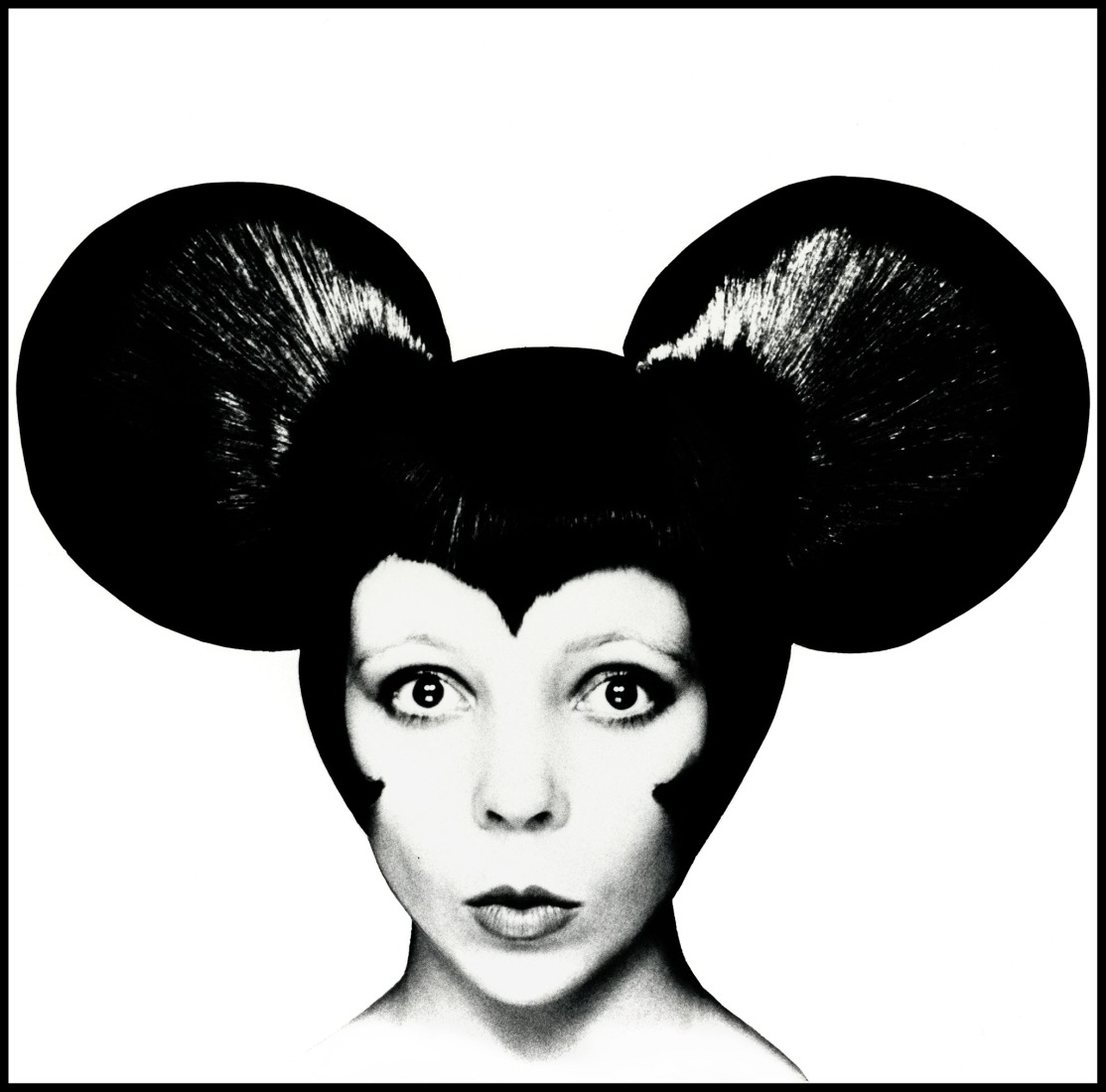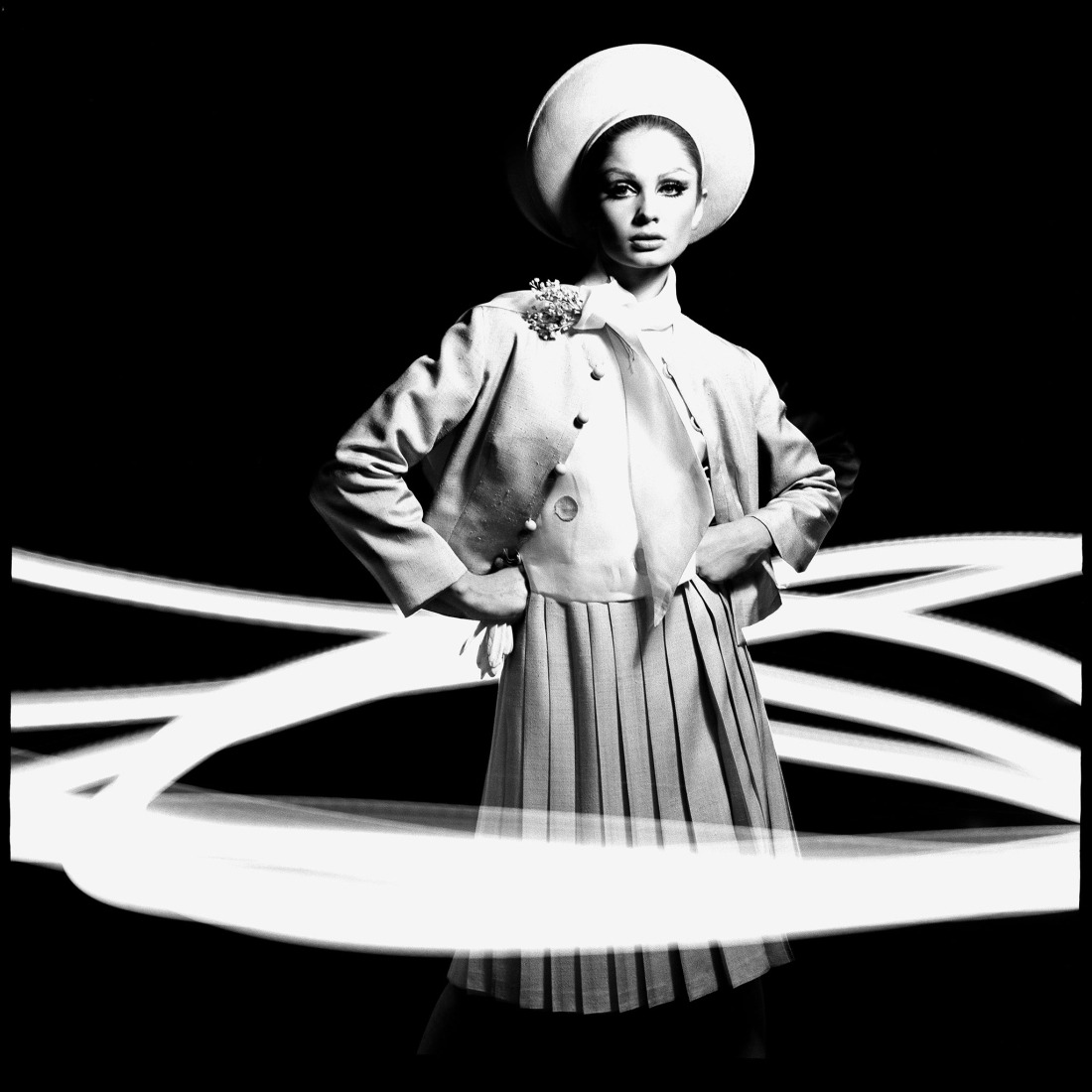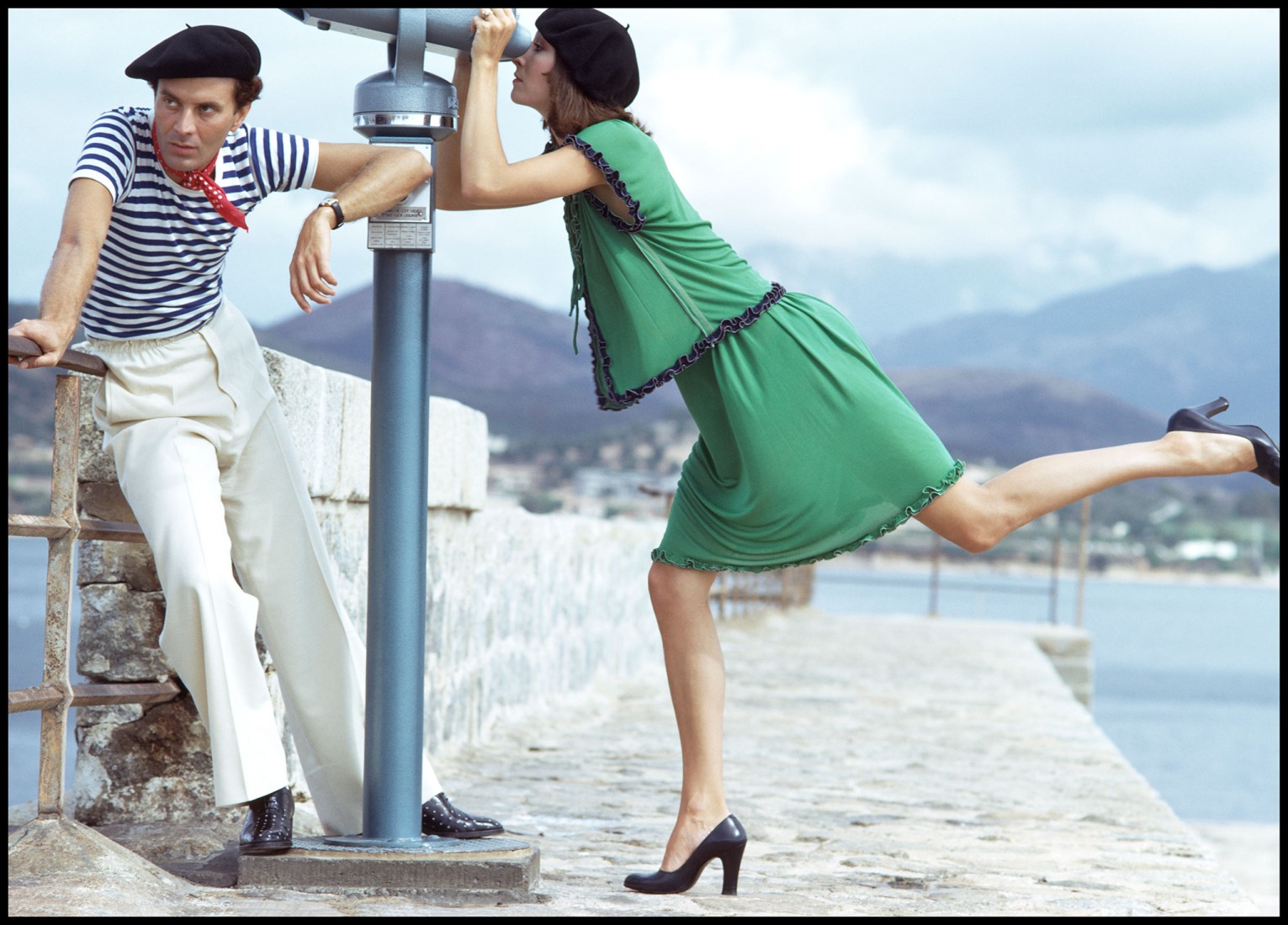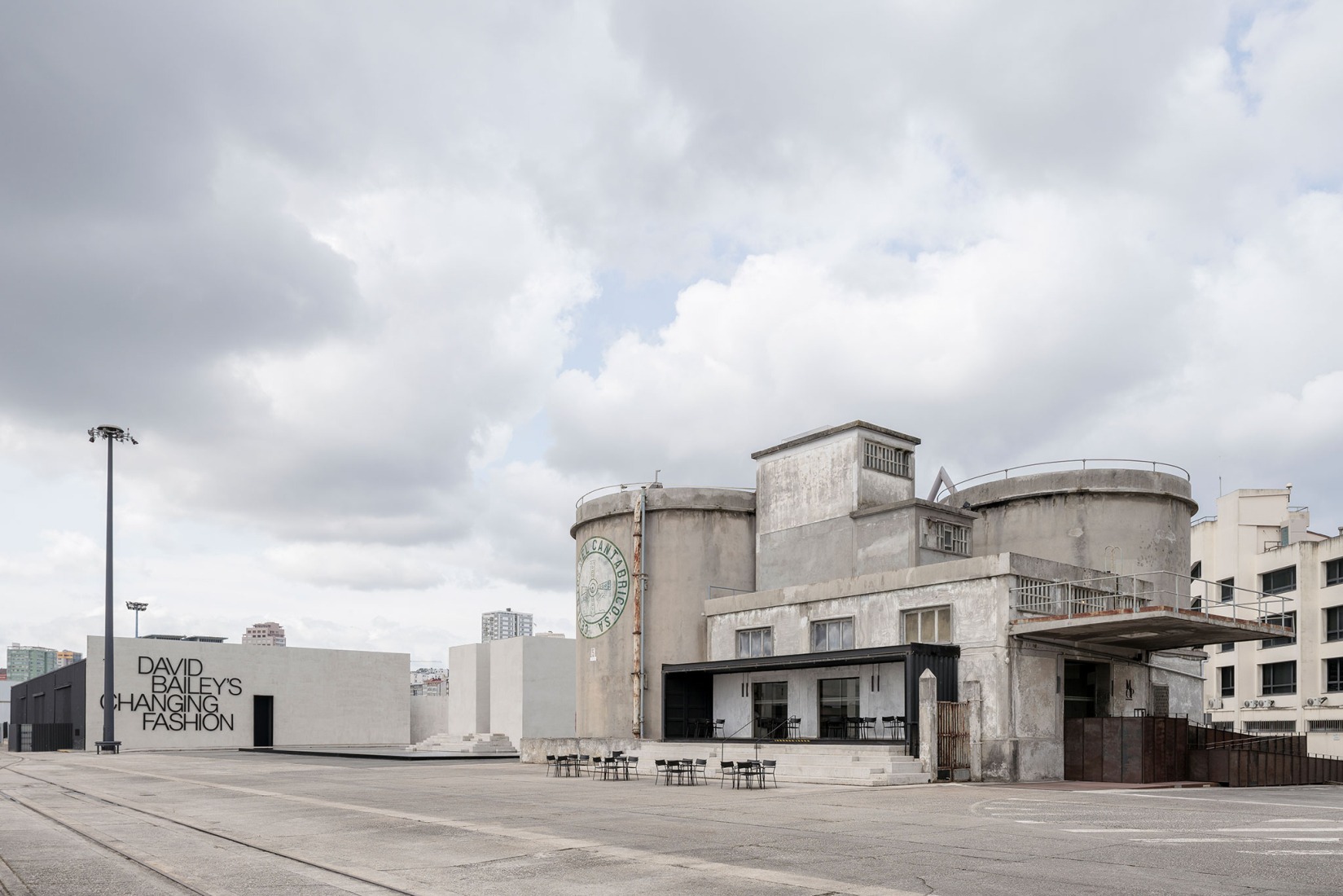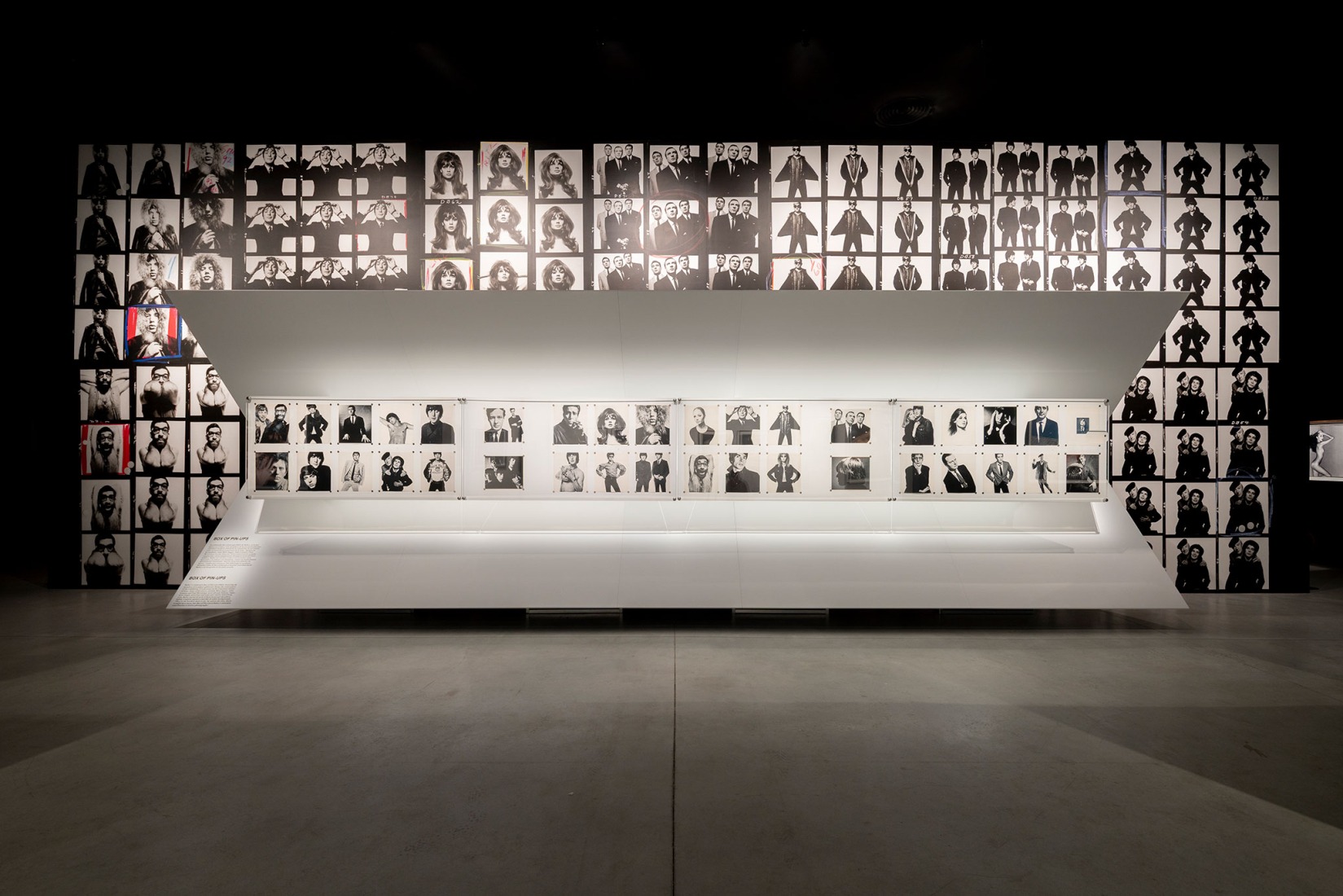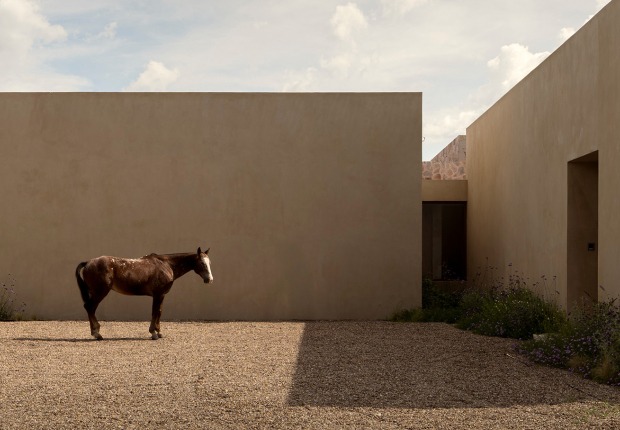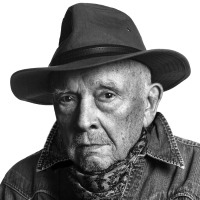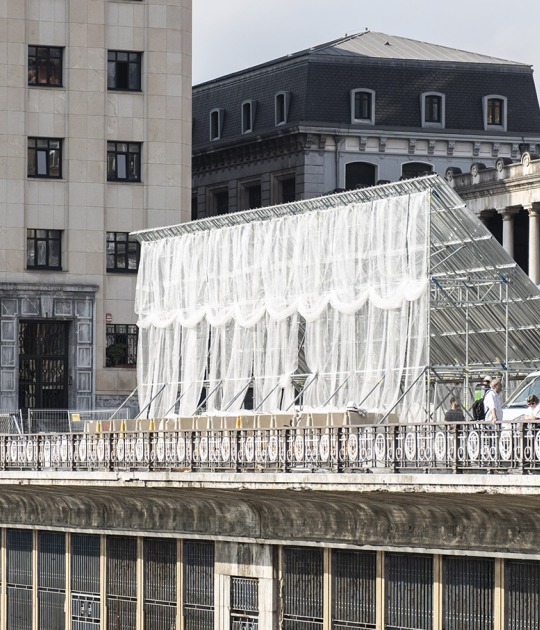The prestigious British photographer David Bailey, a star in his own right, captured the celebrities of the era with his camera, defining the creative and cultural revolution that fueled London's vibrant 1960s scene. The exhibition features photographs from these momentous decades, some of them previously unpublished.
"Irving Penn's studio is like a cathedral; David Bailey's studio is like a cocktail bar."
Diana Vreeland, one of David Bailey editors at Vogue.
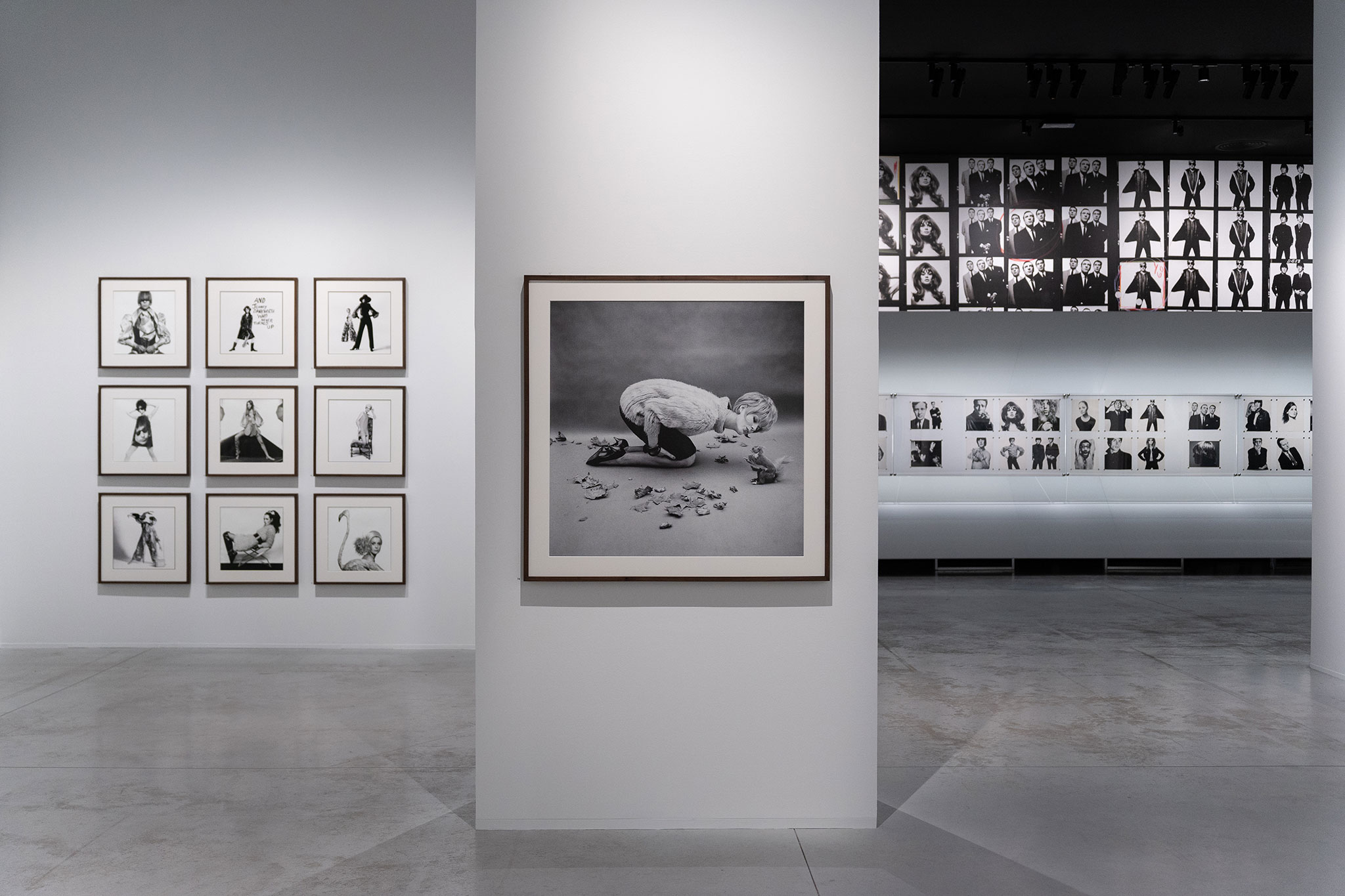
View of the David Bailey's Changing Fashion exhibition. Courtesy of the MOP Foundation.
A sequence of photographs of the English actress and model Jean Shrimpton begins the visit, with particular attention paid to "David Bailey's Box of Pin-Ups."
The acclaimed "Box of Pin-Ups" (1965), featured in this exhibition, represent Bailey's major contribution to 1960s photography, illustrating the transient nature of fame. Bailey photographed his 36 models with tightly framed head-and-shoulder shots against a brightly lit white background.
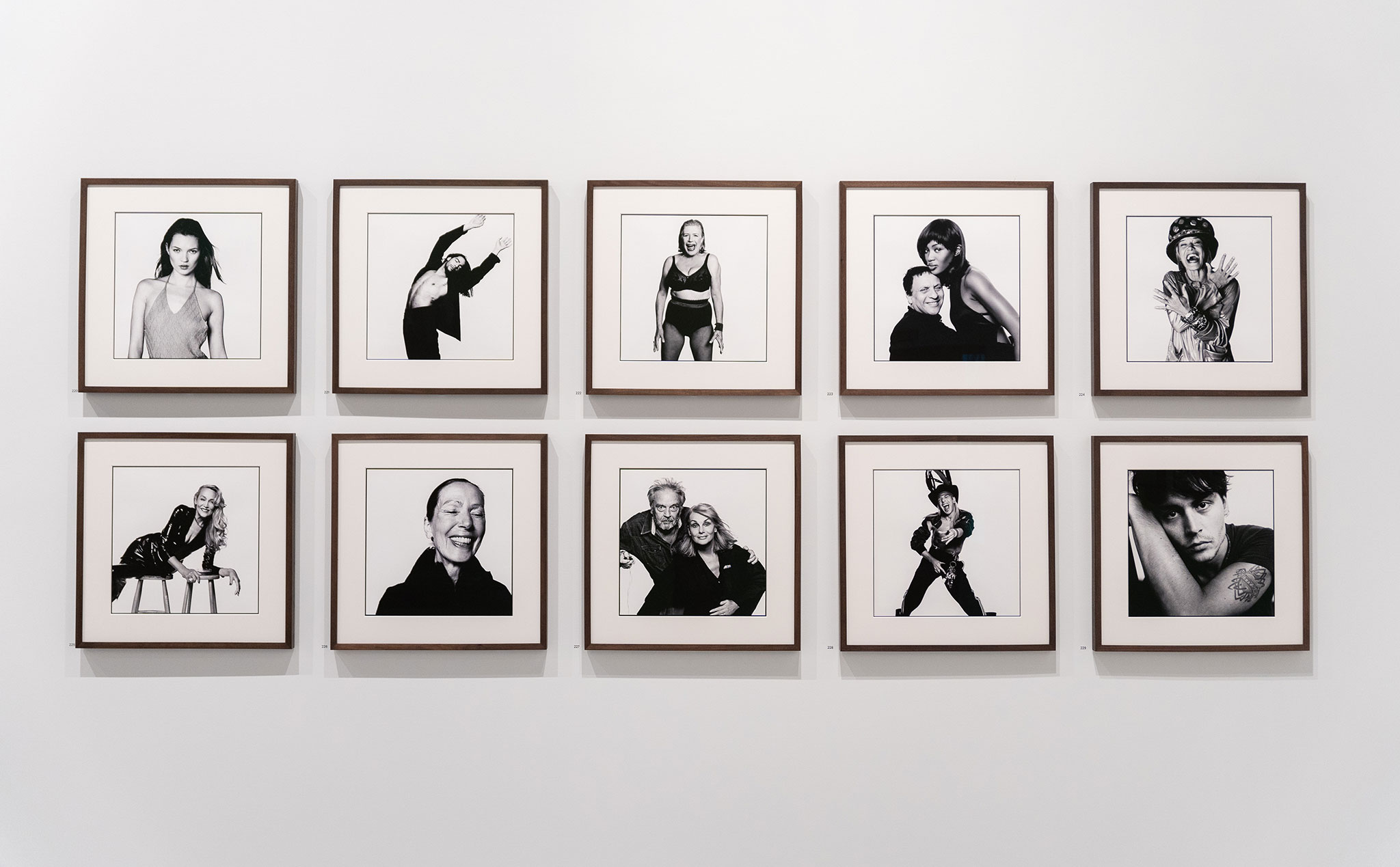
View of the David Bailey's Changing Fashion exhibition. Courtesy of the MOP Foundation.
Additionally, a carefully curated selection of photographs and objects illustrates and highlights the unique nature of Bailey's studio. The 1965 portfolio includes 36 members of the London scene, from Mick Jagger to Rudolf Nureyev, Shrimpton, Michael Caine, Cecil Beaton, and the notorious gangsters Ronnie and Reggie Kray, all members of Bailey's circle.
The exhibition is rounded out by a specially produced short film reinterpreting the artist's box of pin-ups and a free publication inspired by Ritz, the celebrity, fashion, and gossip magazine Bailey founded with David Litchfield in 1976.
"David Bailey's Changing Fashion" is a portrait of an artist who shaped the visual language of the 1960s and 1970s and who has continued to reinvent himself through experimentation and technical innovation.
